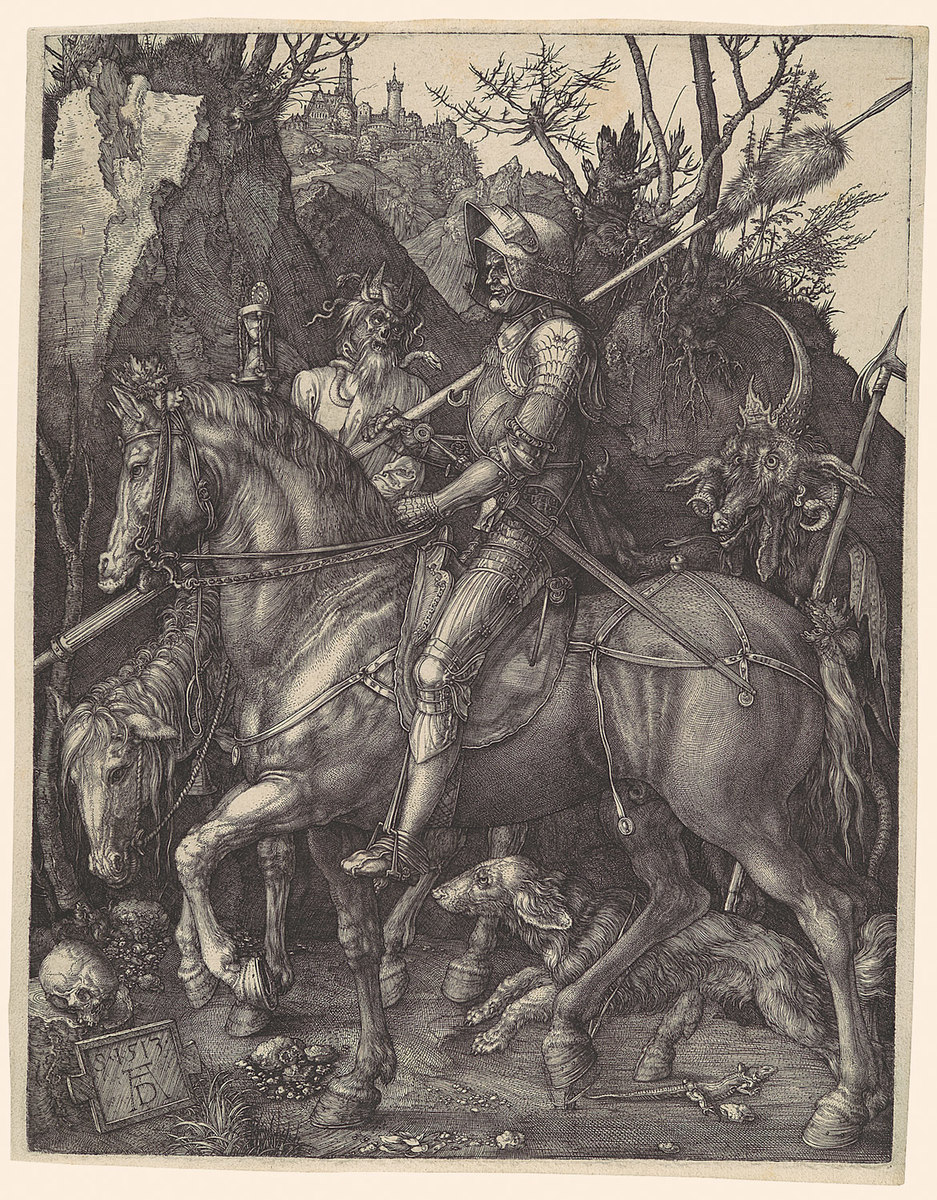Printing the North: Albrecht Dürer, Knight, Death and the Devil (1513)
Abstract
Originally called The Rider [Der Reuter], this engraving depicts an elegant, mounted knight who encounters a devil (likewise on horseback) while making his way through a mountainous, forested landscape. The dense symbolism of the image has spawned many, often conflicting, interpretations of the various themes. One thing, however, is certain—as an engraving, Knight, Death, and the Devil was a product of the Early Modern print revolution that began in Germany and changed how both texts and images circulated in society. Woodblock prints were relatively cheap, so it was no longer just the very wealthy who could own books and images. Given its complexity, however, this engraving still would have been prohibitively expensive for most. Images such as Knight, Death, and the Devil illustrate how sophisticated printing had become by the early sixteenth century. And it was printers in the German territories who stood at the forefront of this technological progress.
Source

Source: Albrecht Dürer, Knight, Death, and the Devil, 1513, engraving. The Metropolitan Museum of Art, Harris Brisbane Dick Fund, 1943. Available online at: https://www.metmuseum.org/art/collection/search/336223
The Metropolitan Museum of Art
Further Reading
Babette Bohn and James M. Saslow, eds., A Companion to Renaissance and Baroque Art. Chichester: Wiley-Blackwell, 2013.
Susie Nash, Northern Renaissance Art. Oxford and New York: Oxford University Press, 2008.
Larry Silver and Jeffrey Chipps Smith, eds., The Essential Dürer. Philadelphia: University of Pennsylvania Press, 2010.